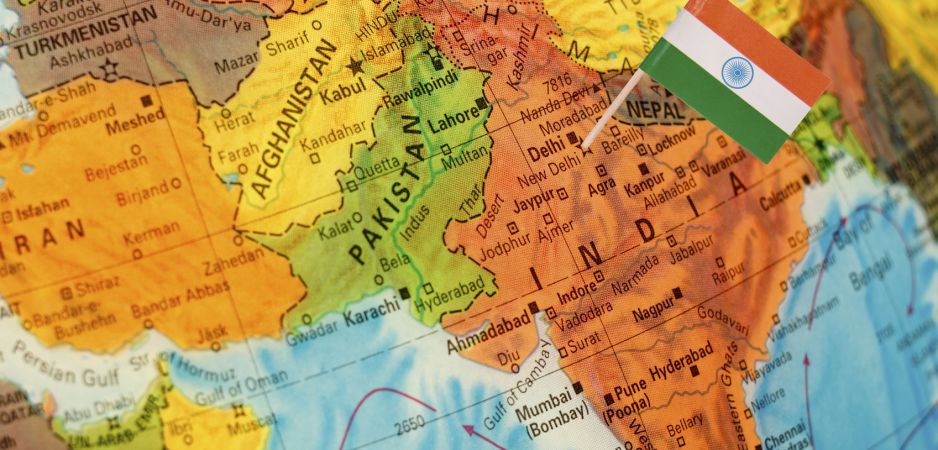Street protests that have plagued Kashmir are likely to continue in the absence of meaningful political engagement between New Delhi and local stakeholders.
Indian-administered Kashmir has seen a new wave of unrest since early July when security forces killed 22-year-old Burhan Wani, the former head of the Hizb-ul-Mujhaideen militant group and a popular separatist leader in the Muslim-dominated Kashmir Valley. His death has prompted prolonged protests by tens of thousands of Kashmiris, despite a curfew imposed by Indian authorities.
More than 60 people have died in ensuing clashes with security forces and over 5,000 people have been injured, many of them maimed or blinded due to the use of pellet guns.
The latest spell of violence has been the deadliest in Kashmir since 2010, when the killing of three villagers—mistakenly identified as Pakistani militants—by security forces sparked months of demonstrations in which nearly 120 people died.
Worsening unrest due to violent state response
The use of excessive force by Indian security forces against unarmed protesters has fueled public anger in the Kashmir Valley and reduced the likelihood of a timely resolution to the unrest. The heavy-handed security response has been accompanied by severe restrictions on movement, mainly in restive districts in southern Kashmir, for over 40 days, as well as the suspension of mobile and internet services—a common practice during periods of unrest in the Valley, which the government claims helps prevent the mobilization of people. More than 1,000 people, including prominent separatist leaders, have also been arrested.
The use of force has touched upon longstanding underlying grievances in Kashmir over draconian policing laws and the lack of accountability for civilian killings. Against this backdrop, the July protests that began over the killing of a separatist leader have morphed into calls for independence from India, as was seen during the sustained demonstrations that occurred in the summers of 2008 to 2010.
The Indian government has, so far, shown little inclination toward resolving the crisis by engaging with political actors in Jammu and Kashmir. India’s adoption of a parliamentary resolution to “restore peace and harmony” to Kashmir and stated willingness to talk to moderate groups in the Valley at the exclusion of separatist groups that enjoy a degree of legitimacy in Kashmir will do little to calm the unrest.
The government has also failed to address key issues such as lifting the controversial Armed Forces Special Powers Act—which provides security forces with immunity from criminal and civil prosecution—as well as the excessive military presence in the area even during periods of calm. In the absence of tangible progress on these concerns, the threat of civil unrest is likely to continue, at least until the harsh winter months.
As yet, the risk of a renewed armed conflict, as seen in the 1990s, remains low. By the government’s own estimates, fewer than 100 armed militants—defined by New Delhi as those who have received training and support from Pakistan—are thought to be based in Valley, compared to the nearly 700,000-strong presence of Indian troops. However, the potential for isolated clashes remains, as seen in the periodic gun battles between security forces and armed fighters and small-scale attacks on police personnel.
The heightened tensions have also hurt the prospects of Kashmir’s tourism industry—a key driver of the economy—particularly in the peak summer months. There have already been several reports of tourists cancelling bookings amid a perceived security threat and concerns over restrictions to movement due to the curfew. According to the state’s tourist department, about 10,060 tourists visited Jammu and Kashmir between August 1 and 12, compared with 89,243 during the same period in 2015.
Growing tensions with Pakistan
The crisis in Kashmir has seen relations between India and Pakistan deteriorate to a new low, with New Delhi accusing Islamabad of instigating the unrest. Given that Islamabad was widely believed to have armed and trained Kashmiri insurgents in the 1990s, India’s typical response during periods of tensions in the region has been to tighten security along the border and blame increased infiltration by Pakistan-based militants for any unrest.
This time, New Delhi has gone further and alleged that members of the Pakistani army had infiltrated the local population in Kashmir and were fueling the protests, even though there is little evidence to substantiate this claim.
Such accusations, as well as counter-claims by Pakistan of widespread abuses by Indian security forces and assurances of “moral and diplomatic support” for Kashmiri independence, have placed a severe strain on bilateral ties. Reports of Indian security forces killing Pakistani militants are on the rise, with the army stating on August 21 that it had shot dead three terrorists from across the border in North Kashmir’s Tanghdar sector. According to intelligence officers quoted in Indian media reports, over 60 Pakistani militants purportedly entered the country during the past month in Kashmir.
The dispute marks a blow to the progress made in improving relations during Indian Prime Minister Narendra Modi’s first months in office, when he invited Pakistani Prime Minister Nawaz Sharif to New Delhi for his inauguration in May 2014 and followed it up with a surprise visit to Lahore in December 2015.
By contrast, both sides now appear focused on capitalizing on the Kashmir unrest to meet their own domestic political objectives. For instance, Sharif told a political rally in July that he was waiting for the day when Kashmir would become a part of Pakistan, while Modi accused Islamabad of committing atrocities in Balochistan, which has seen separatist insurgency for over six decades, and in Pakistan-administered Kashmir.
Outlook
There is little political will to find a solution to the ongoing crisis, and bilateral talks over a range of issues including Kashmir—first scheduled for January—have been repeatedly postponed. The leaders of both countries also face several other domestic challenges, which militate against spending political capital on an issue that is extremely divisive in both countries.
For Modi, the near-term focus will be on state elections in 2017, particularly in Gujarat and Uttar Pradesh, which will have a bearing on his chances of re-election in 2019. For Sharif, the political crisis over leaked Panama Papers, alongside ongoing security and economic challenges in the country, remain pressing problems.
In this context, the likelihood of tangible progress in bilateral talks is low. Strategic competition over regional issues such as India’s role in Afghanistan and Pakistan’s relationship with China also underpin wider regional tensions between both countries. Modi’s remarks on India’s Independence Day in August hinting at possible support for Balochistan and Gilgit-Baltistan, which are both key to the $46 billion China-Pakistan Economic Corridor, have triggered a sharp backlash from Islamabad and highlight how provocative political statements can both spur unrest and derail prospects for bilateral cooperation.
Prospects for improved trade relations also appear limited, in contrast to optimism seen in December 2015 following Modi’s visit to Lahore, when Indian officials acknowledged the possibility of high-level talks over liberalizing the visa regime and granting additional business visas to Pakistanis visiting India. Previous periods of stability in Indo-Pak relations have seen a willingness to strengthen economic ties, an issue that is seen by both as relatively uncontentious and mutually beneficial.
The hardening stance of both countries amid the Kashmir unrest, however, suggests that such efforts are likely to take a backseat.
Against this backdrop, relations between India and Pakistan will remain tense. Although the unrest in Kashmir is unlikely to escalate into a bilateral conflict, the tensions could result in heightened cross-border skirmishes along with a tightening of security along the Line of Control, as was seen in late 2014 and early 2015 when troops engaged in intermittent shelling for several consecutive months.
*[This article is based on a report by PGI Intelligence.]
The views expressed in this article are the author’s own and do not necessarily reflect Fair Observer’s editorial policy.
Photo Credit: Hansslegers
 We bring you perspectives from around the world. Help us to inform and educate. Your donation is tax-deductible. Join over 400 people to become a donor or you could choose to be a sponsor.
We bring you perspectives from around the world. Help us to inform and educate. Your donation is tax-deductible. Join over 400 people to become a donor or you could choose to be a sponsor.
Support Fair Observer
We rely on your support for our independence, diversity and quality.
For more than 10 years, Fair Observer has been free, fair and independent. No billionaire owns us, no advertisers control us. We are a reader-supported nonprofit. Unlike many other publications, we keep our content free for readers regardless of where they live or whether they can afford to pay. We have no paywalls and no ads.
In the post-truth era of fake news, echo chambers and filter bubbles, we publish a plurality of perspectives from around the world. Anyone can publish with us, but everyone goes through a rigorous editorial process. So, you get fact-checked, well-reasoned content instead of noise.
We publish 2,500+ voices from 90+ countries. We also conduct education and training programs
on subjects ranging from digital media and journalism to writing and critical thinking. This
doesn’t come cheap. Servers, editors, trainers and web developers cost
money.
Please consider supporting us on a regular basis as a recurring donor or a
sustaining member.
Will you support FO’s journalism?
We rely on your support for our independence, diversity and quality.






